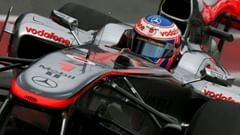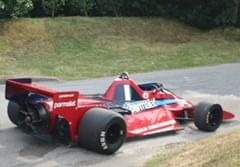Pushing the Limits in F1
- rohan santhosh
- Jul 4, 2020
- 3 min read
Formula 1 is one of the most advanced sports in the world and is the premier motorsport followed by close to 500 million fans from all around the world. The cars in F1 are as advanced as they have ever been before and feature fascinating technologies to improve driver and spectator safety and make the cars faster. Though the FIA(Fédération Internationale de l'Automobile) imposes strict rules to enforce safety and increase the closeness of the racing, many innovative F1 technologies take advantage of a clear loophole.

For the 2009 F1 season, Brawn GP exploited a loophole in the rear diffuser design and gave their BGP 001 a diffuser which featured two different levels and allowed more air to flow through the central part of it which increased the rear downforce considerably. More teams slowly caught on and soon Toyota and Williams had their own versions. Unfortunately for the teams that used it, it was made illegal for the 2011 season.
In 2010, McLaren installed a duct in their MP4-25 which was shaped like a snorkel. This duct could be operated by Lewis Hamilton’s or Jenson Button’s left leg to send the airflow down a vent. The rear wing would be “stalled” when the F-duct covered and effectively gave the car a top speed increase of 6mph. Despite this technically not being a piece of moving aero(which would be illegal), due to protests about the unsafe operation of Ferrari’s iteration of this mechanism, which involved the driver to take his hand off the wheel, the FIA eventually banned this system by the end of the season.

In 1976, Tyrrell raced the P34 which featured 6 wheels, 4 in the front and 2 in the back. The rear two wheels were the powered wheels while the 4 front wheels were used to steer. This unusual set up gave the P34 exceptional turn in due to the extra front two wheels and gave it better acceleration due to a narrower front end as well. The P34 proved to be pretty competitive and was driven by Jody Scheckter and Patrick Depailler. The P34’s most successful outing was during the Swedish Grand Prix in which the 2 Tyrrell’s came first and second. While Depailler praised the P34, Schecter left the Tyrrell team and called the six-wheeler a “piece of junk”. In 1977, Ronnie Peterson was hired to replace Scheckter and a new car was made to accommodate his height. The new P34B was now heavier than ever before, being a considerable 86 kg over the F1 minimum of 575 kg. This caused the brake to face severe fatigue and although Ronnie came out with a few promising results, the car was nowhere near as good as the previous iteration. For the 1978 season, Tyrrell introduced Ronnie’s new car with a more conventional 4-wheeled layout and “closed the book” on their six-wheeler car.
In 1978, Brabham introduced their BT46 or “Fancar”. Gordon Murray designed it to feature a fan on the back to make the most of “Ground effects”. Brabham claimed that the fan was for increased engine cooling whereas in reality the fan was used to increase downforce. The fan sucked the air from underneath the car and effectively sucked the car into the road. The “fancar” won its first and only race in the Swedish Grand Prix with Niki Lauda behind the wheel. The concept was withdrawn after the single race even though the FIA ruled that it could be used for the rest of the season.
F1 has always been about pushing the limits of science and technology within the guidelines set by the FIA. The exploitation of loopholes in the guidelines is a testament to the commitment of all the teams and proves that F1 is truly one of the most advanced sports.







Comments